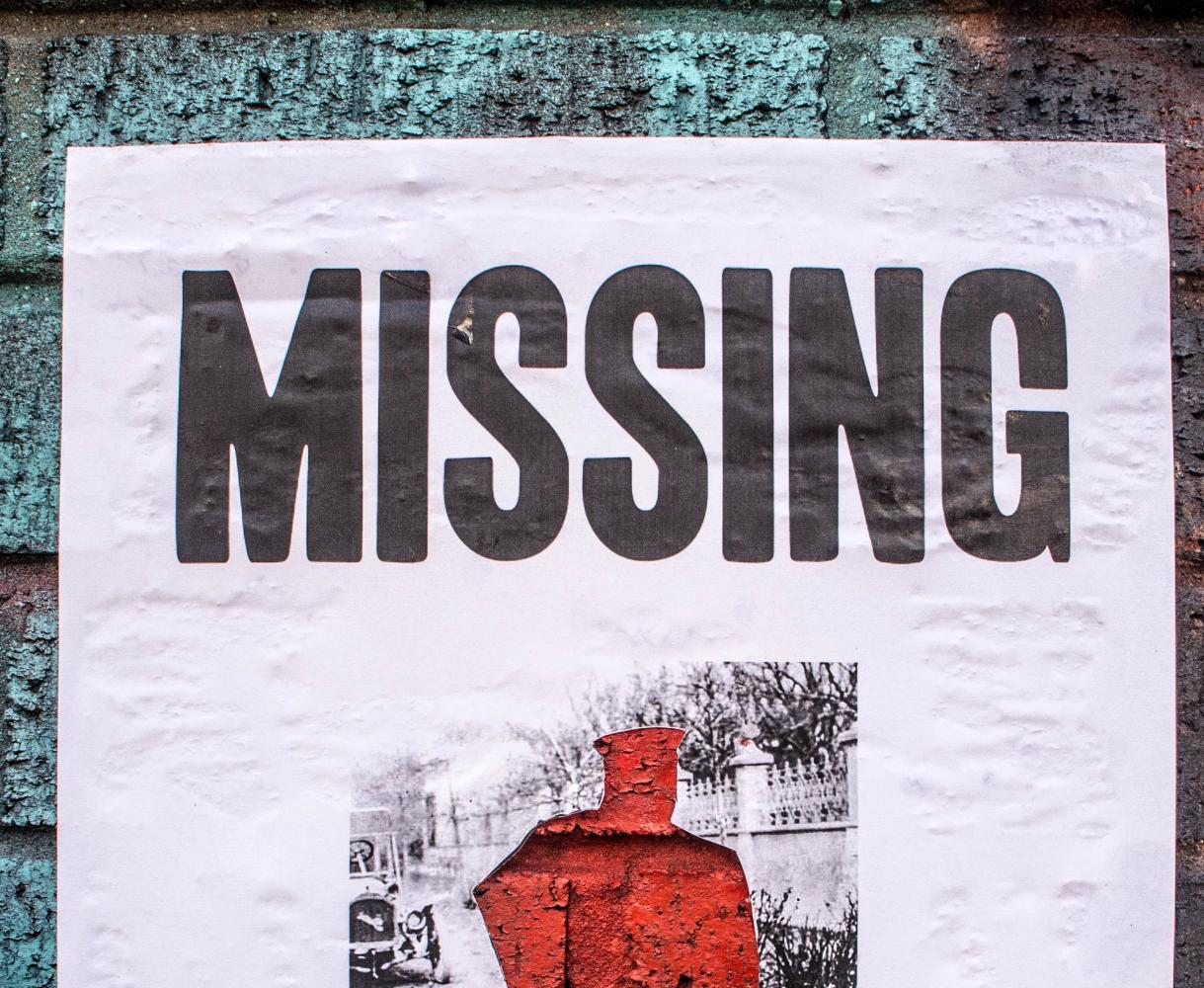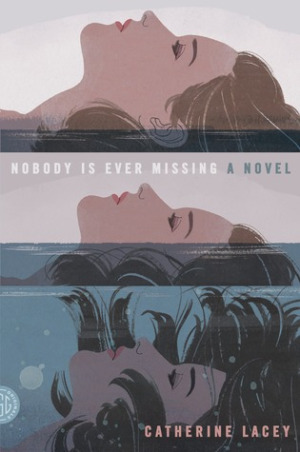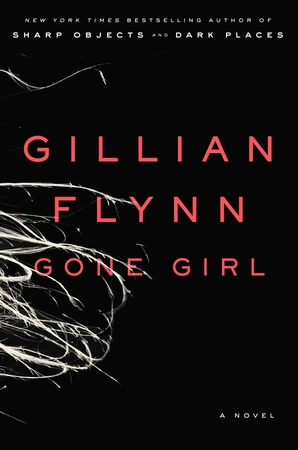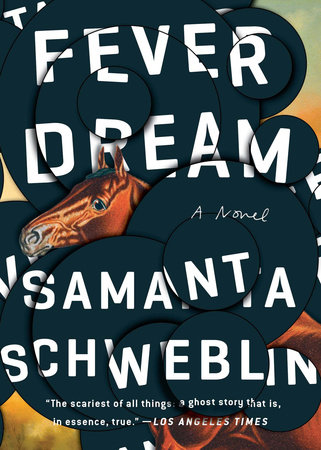Reading Lists
7 Unconventional Missing Person Stories
Sarah Elaine Smith, author of "Marilou Is Everywhere," on books about women who are lost in more ways than one

Consider it the first mystery of the missing that they are said to “go” somewhere, somewhere called “missing.” Or maybe missing is less a place, more of a gerund. The abducted and kidnapped go missing the way the rest of us go running, skating, and skipping, making missing a sport you could almost imagine at the Olympics. But if to miss is to misdirect—wouldn’t an Olympic misser be able to land an arrow anywhere but the center of the target? Maybe a world-class misser would miss the mark so astoundingly as to accidentally assassinate the judge, or pierce her own heart?
Some hallmarks of the missing-person story: It’s told from the perspective of the people or community left behind, establishing a sane and true world as a foil for the unknowable negative space the missing person has stepped into. The missing person no longer speaks, except from their own past—in letters, found evidence, or their own words recalled by their intimates. And so very, very often the missing person is female, and her disappearance is somehow a referendum on purity and wholesomeness—not just her own, but the community’s as well.
My novel Marilou Is Everywhere begins with a familiar plot: a teenage girl, Jude, disappears shortly after high school graduation. While the investigation (and gossip) unfolds, another teenage girl sees a chance to leave a precarious situation in her own home, and slips into Jude’s life. The book’s mystery wanders away from the idea of pursuing a single criminal responsible for the disappearance, instead asking how society has already failed to see these women. Maybe they were missing a long time before they disappeared.
I’m a reader who loves to turn the pages, and missing-person stories are my catnip. But I especially love books that diffuse the basic ingredients of this narrative in ways that point out how going missing can be merely the end result of a chronic absence—of care, attention, understanding, or visibility.
2666 by Roberto Bolaño, translated by Natasha Wimmer
All of Bolaño’s work, in my estimation, invokes the dread of emptiness or cosmic violence, but nowhere as brutally as in 2666, the fourth part of which recounts the disappearance of murdered and mutilated women in Santa Teresa, presumably the book’s proxy for Ciudad Juárez. It is by far the longest section in the book, both horrible and banal.
2666 is a feast of genres: campus novel, love story, mystery, history. But the recitation of circumstances surrounding the missing women act as a counterbalance, an echoing pit beneath the rest of the book. The narrative does, in a way, bend toward a single evildoer, but it also hints at a broader culpability, asking how that cavernous violence undergirds art and the sublime.
Nobody Is Ever Missing by Catherine Lacey
Elyria walks right out of her life one day, leaving Manhattan for New Zealand, leaving a husband and a job and all the materials of normal life for an acquaintance’s proffered spare room on a farm. Instead of tracking her disappearance from the perspective of those left behind, the novel follows her as she disappears—and she does so more or less continuously. Her elliptical observations eventually reveal that grief over her sister Ruby’s suicide may be what unfastened her from her life. Is every traveler merely in the midst of a constant disappearing act? In a sharp and wonderful reversal, it’s almost as if Elyria’s life has gone missing from her, not the other way around.
Jane: A Murder by Maggie Nelson
Nelson’s aunt Jane Mixter was murdered while studying law at the University of Michigan in 1969, the subsequent investigation and trial further investigated in Nelson’s also excellent The Red Parts. But Jane: A murder undertakes a different kind of recovery project, one in which Nelson integrates text from Mixter’s journals—sometimes as interjections, and sometimes as whole poems. Occasionally the poems conjure the circumstances around Jane’s death as if they were portents—Jane, as a character in the sequence “The Light of the Mind,” dreams that she discovers a new freckle on her forehead that transforms into a gunshot wound. Another section recounts the circumstances of Jane’s murder, but Nelson structures the book so that interjections from Jane’s papers comment upon the reportage with an uncanny impossibility. Following the family’s shock at identifying her body, this note from her journals: “I can become a very tragic figure in my own mind/if I don’t make an effort to be gay.” Jane somehow seems to go more missing the more Nelson discovers about her.
Gone Girl by Gillian Flynn
I confess, I thoroughly enjoyed watching my peers at the Iowa Writers’ Workshop fuss and nitpick over this book after it came out. It seemed that something so basic as a plot twist had been long discounted as utterly pedestrian, and it was delicious to watch so many people wonder, often with a note of panic, whether there might be something to these page-turners after all. Or perhaps I’m projecting? I like an obtuse German-language book-length meditation on suicide and wood ducks as much as the next MFA, but I also love compulsively readable books. And I had found it frustrating to hear (more than once) other writers dismiss popular books as some kind of collective delusion rather than a canny demonstration of narrative spellcraft. (And doesn’t everyone know that popular books are a combination of the two?)
It’s nothing short of gruesome, how powerfully the missing woman story baits a reader like me into racing through this novel, and I appreciated it for deftly closing the door behind me halfway through and confronting me with the blindness that so often accompanies a reader’s hunger for such a story. Despite the tricksy plot, Amy is still the missing girl in here, made so at first when her parents replace her with Amazing Amy, their idealized chapter book heroine, and then again at her own hand, when she conjures a Cool Girl version of herself to seduce her husband.
Fever Dream by Samanta Schweblin, translated by Megan McDowell
The only appropriate way to describe this book is to note that it’s the first and only that made me check the deadbolt on my door multiple times while reading it. Like the best cosmic horror, it carries at its center a piece of knowledge which has contaminated and harmed the characters who encounter it, including David, who has been soul-swapped by a witch doctor, and Amanda, blind in a hospital bed. David relentlessly questions Amanda: she must remember the exact moment when the worms entered her body. Her recall grows flimsier as he nudges the story out of her. Some part of herself seems to be disappearing, the same part which disappeared from David. As a reader, I want to know what happened, but is it possible to know without falling under the same spell? It seems not, and every page turned feels like a step toward my own split from consciousness.
Disappearing Earth by Julia Phillips
It’s supposed to be a nightmare scenario to discover that a book engaged with very similar materials as your own is coming out a few months earlier—especially if it’s like, really really good. But I was delighted to read this layered anti-investigation of the disappearance of two girls from the remote Kamchatka province in Eastern Russia. Functioning as a series of linked stories as much as a novel, the book slips the missing girls into the background of each subsequent section, ghostly and filtered through the discourse of other stories. They show up as cautionary tales, asides, metaphors, a rationale for bigoted lamentations about the presence of “outsiders,” but those other stories offer sly illumination of the broader cultural setting that makes their disappearance possible.
Ban en Banlieue by Bhanu Kapil
In 1979, Ban is a black girl walking home from school during the beginning of a race riot in the Southall suburb of London where the anti-Nazi activist Blair Peach will be murdered by the end of the night. When Ban hears the first sounds of struggle, she lies down on the ground where she’s walking. But to call that a plot would be to miss, well, just about everything in this book. Some parts are notes for a performance piece. Some are refractions of the narrative, retellings, attempts which begin and begin and begin in search of something silent and crucial about what this violence does to black and brown bodies.
Ban disappears in the sense that she transubstantiates: “Ban is a mixture of dog shit and bitumen (ash) scraped off the soles of running shoes: Puma, Reebok, Adidas. // Looping the city, Ban is a warp of smoke.” She is everywhere. The sound of shattering glass, in turn, shatters her, and time becomes multiple. A summary is impossible because this book frustrates every hierarchical imperative imaginable. So fuck this attempt: Please just read it.















